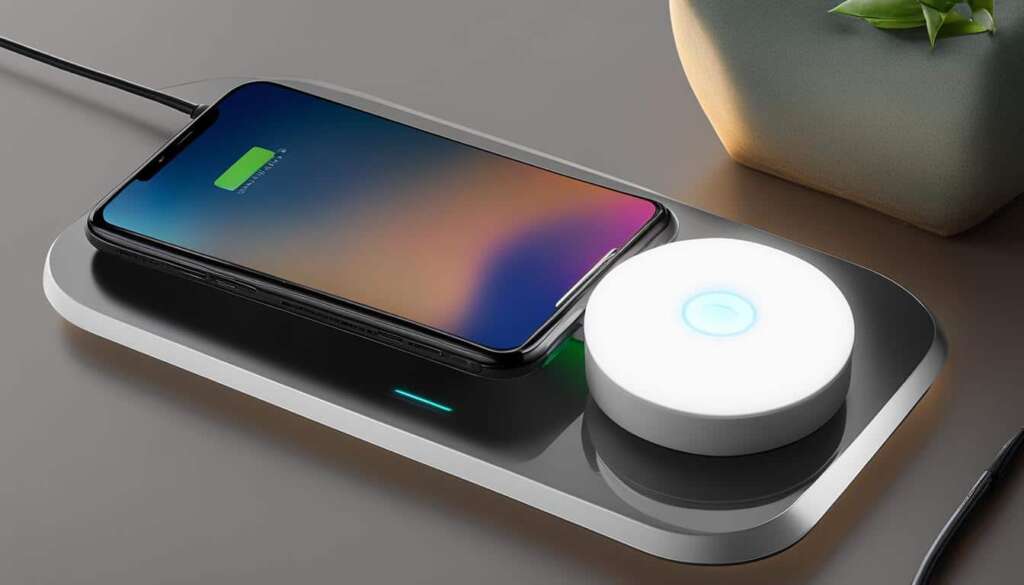Table of Contents
In the world of Windows development, Microsoft faced a challenge when USB technology emerged. To test the compatibility of Windows 98 with USB devices, they created the unconventional “USB Cart of Death.” Laden with 64 USB devices, including keyboards, mice, printers, and gaming steering wheels, the cart aimed to push the limits of the operating system. It served as a mobile test station, driving from one Windows developer to another. The ultimate goal was to ensure Windows could handle the constant connection and disconnection of USB devices without crashing or compromising stability. Windows 98 passed the test, thanks to the efforts of the developers and their adjustments to the Windows source code.
The Testing Process of the USB Cart of Death
The USB Cart of Death underwent a rigorous testing process to ensure the compatibility of Windows 98 with USB devices. This unique testing apparatus consisted of 64 USB devices, including keyboards, mice, printers, and gaming steering wheels, all connected to a Windows PC through a single USB cable. The testing process aimed to push the limits of the operating system and replicate real-world scenarios of constant connection and disconnection of USB peripherals.
During the testing process, the USB Cart of Death was connected to the Windows PC, allowing the operating system to recognize all 64 devices. The drivers were then activated, and the devices were subsequently unplugged, often resulting in a system crash. The responsible developer would carefully analyze the system crash and make adjustments to the Windows source code based on their findings. This iterative process was repeated until the system could handle the constant connection and disconnection without crashing or compromising stability.
The testing process was essential in pinpointing any vulnerabilities or weaknesses in Windows 98’s USB compatibility. Each system crash provided valuable insights into the areas that required improvement. By making necessary adjustments to the Windows source code, Microsoft’s developers ensured that Windows 98 could deliver a stable user experience, even in the face of frequent USB device connection and disconnection.
Overall, the testing process of the USB Cart of Death allowed Microsoft to fine-tune Windows 98’s compatibility with USB devices. It was a crucial step in ensuring that the operating system could handle the demands of the emerging USB technology, providing users with a stable and reliable computing experience.
The Testing Process at a Glance
| Step | Description |
|---|---|
| 1 | Connect the USB Cart of Death to the Windows PC via a USB cable |
| 2 | Allow Windows to recognize all 64 connected USB devices |
| 3 | Activate the drivers for the USB devices |
| 4 | Unplug all USB devices |
| 5 | Analyze system crash and identify vulnerabilities |
| 6 | Adjust Windows source code based on findings |
| 7 | Repeat the process until stability is achieved |
The Purpose and Importance of the USB Cart of Death
The USB Cart of Death served a crucial purpose in testing and ensuring the compatibility of Windows 98 with USB devices. Its unconventional design and rigorous testing process were aimed at pushing the limits of the operating system to ensure a stable user experience. By subjecting Windows 98 to the constant connection and disconnection of 64 USB devices, the developers aimed to identify any weaknesses or potential system crashes that could compromise the reliability of the operating system.
The importance of the USB Cart of Death cannot be overstated. It played a pivotal role in paving the way for future USB compatibility in the Windows operating system. The successful testing of Windows 98 with the USB Cart of Death demonstrated Microsoft’s commitment to delivering a stable and reliable user experience, even in the face of emerging technologies. Without this rigorous testing process, Windows may not have been able to seamlessly integrate with USB devices, potentially hindering the widespread adoption and use of this technology.
Furthermore, the USB Cart of Death showcased Microsoft’s dedication to innovation and overcoming challenges in software development. The creation of such a unique testing apparatus exemplifies the lengths that developers go to in order to deliver high-quality products. It stands as a testament to the company’s commitment to pushing boundaries and ensuring compatibility with emerging technologies. The USB Cart of Death’s legacy lives on as a symbol of Microsoft’s relentless pursuit of excellence and its willingness to tackle the most challenging obstacles in the pursuit of innovation.
| Key Points: | Details: |
|---|---|
| Purpose | To test and ensure the compatibility of Windows 98 with USB devices. |
| Importance | Paved the way for future USB compatibility in the operating system, delivering a stable and reliable user experience. |
| Innovation | Showcased Microsoft’s dedication to overcoming challenges and pushing the boundaries of software development. |
The Legacy of the USB Cart of Death
The USB Cart of Death may have been retired, but its legacy continues to resonate within the realm of software development. This unconventional testing device stands as a testament to Microsoft’s commitment to innovation and its ability to overcome challenges. The USB Cart of Death was not only a practical solution to test the compatibility of Windows 98 with USB devices, but it also showcased the company’s determination to deliver a stable and reliable user experience.
This legacy of the USB Cart of Death extends beyond its immediate purpose. It serves as a reminder of the lengths that developers go to in order to push the boundaries of technology and ensure seamless integration. By subjecting the operating system to the constant connection and disconnection of 64 USB devices, Microsoft’s developers demonstrated their dedication to creating software that can handle the demands of real-world scenarios.
“The USB Cart of Death’s legacy lies in its innovative nature and its impact on the future of USB compatibility in the operating system.”
The USB Cart of Death’s impact on software development cannot be understated. Its creation and use highlighted the importance of comprehensive testing and the need to adapt source code to ensure stability. This legacy paved the way for future advancements in USB technology, ultimately benefiting users by providing a seamless experience with a wide range of peripheral devices.
The Innovative Solutions Arising from Challenges
The USB Cart of Death’s legacy is a reminder of the ingenuity that arises from encountering challenges. It exemplifies Microsoft’s commitment to finding innovative solutions to complex problems. The device’s retirement does not diminish its significance; instead, it serves as a symbol of the company’s readiness to evolve and adapt in the ever-changing landscape of software development.
The USB Cart of Death may have fulfilled its purpose in testing USB compatibility, but its impact reverberates through the halls of Microsoft and the wider software industry. It stands as a reminder of the dedication and determination required to overcome challenges and deliver exceptional user experiences. The legacy of the USB Cart of Death serves as a beacon for future innovations and an inspiration for software developers around the world.
| Legacy | Innovation | Software Development | Challenges |
|---|---|---|---|
| Symbol of commitment | Ingenuity in problem-solving | Pushing boundaries | Overcoming complexity |
| Paving the way for advancements | Adapting to a changing landscape | Comprehensive testing | Delivering exceptional experiences |
Conclusion
The USB Cart of Death played a significant role in stabilising Windows and ensuring its compatibility with USB devices. Through rigorous testing and adjustments to the Windows source code, Windows 98 passed the test, proving its ability to handle the constant connection and disconnection of USB peripherals. This innovation paved the way for the future of USB compatibility in the operating system, delivering a stable and reliable user experience.
The USB Cart of Death remains a symbol of Microsoft’s commitment to overcoming challenges and pushing the boundaries of software development. It serves as a reminder of the lengths developers go to in order to deliver stable and reliable systems. Microsoft’s dedication to innovation is evident in their efforts to test and ensure compatibility, which has laid the foundation for future advancements in USB technology.
In conclusion, the USB Cart of Death has left a lasting legacy, demonstrating the importance of ensuring stability and compatibility in software development. Microsoft’s commitment to delivering a stable user experience shines through in the successful testing of Windows 98 with the USB Cart of Death. As USB technology continues to evolve, the USB Cart of Death stands as a testament to the innovative solutions that arise from the challenges faced by software developers.
FAQ
What was the purpose of the USB Cart of Death?
The USB Cart of Death was created to test and ensure the compatibility of Windows 98 with USB devices.
How did the USB Cart of Death test Windows compatibility with USB devices?
The cart was loaded with 64 USB devices and connected to a Windows PC. The testing process involved connecting the cart, letting Windows recognize the devices, activating the drivers, and then unplugging them again to test for crashes and stability issues.
What were the results of the USB Cart of Death testing?
Windows 98 passed the test, demonstrating its ability to handle the constant connection and disconnection of USB devices without crashing or compromising stability.
What was the significance of the USB Cart of Death?
The USB Cart of Death played a crucial role in stabilizing Windows and paving the way for future USB compatibility in the operating system. It showcased Microsoft’s commitment to delivering a stable and reliable user experience.
Is the USB Cart of Death still in use?
No, the USB Cart of Death has been retired. However, it remains a symbol of Microsoft’s dedication to innovation and overcoming challenges in software development.













